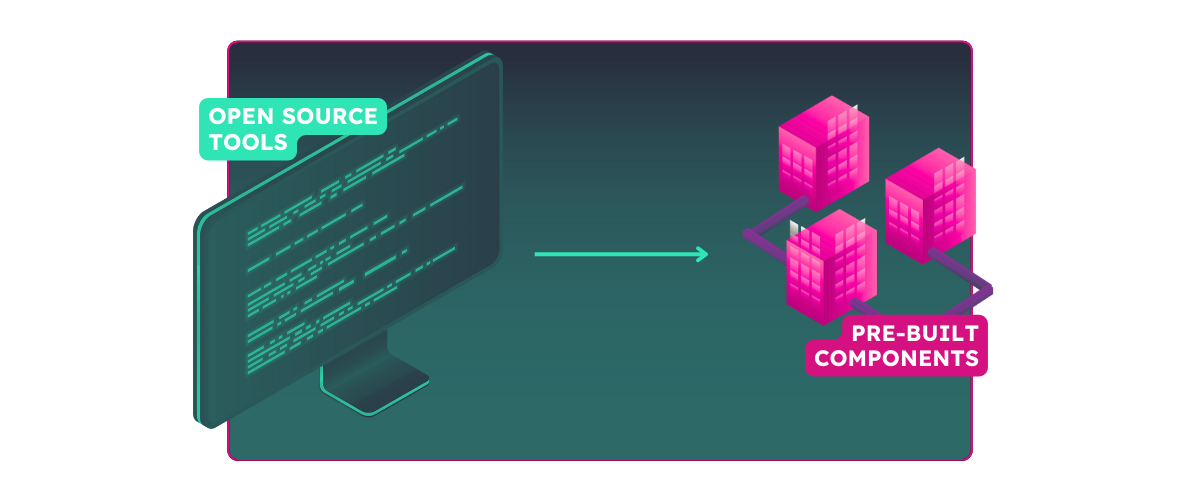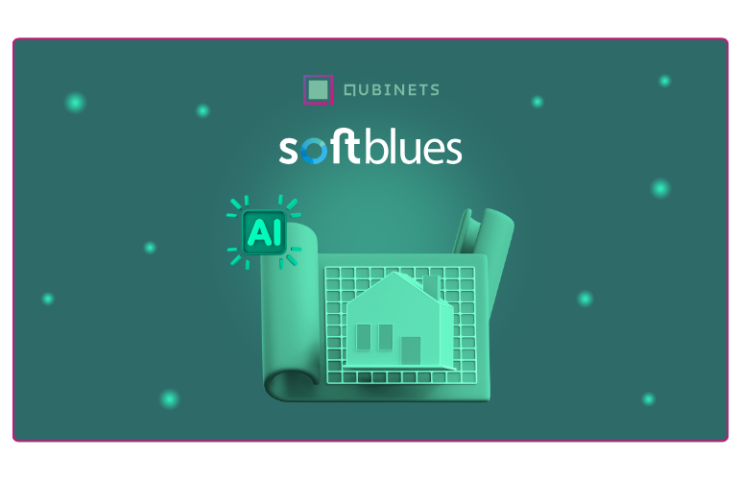Introduction: Helping Developers to Concentrate on Core Competencies
Developers constantly feel the pressure to create high-quality applications swiftly and efficiently.
However, backend development can be complex and often requires a deep understanding of infrastructure management and DevOps practices. This is where low-code platforms can make a difference. They simplify the process, making it easier to build scalable and secure applications without needing to be an expert.
Developers could focus on what they do best — creating new solutions and improving user experience — if they were not distracted by other tasks.
With the rise of low-code platforms, this has become a reality, enabling developers to build robust backends with ease, while significantly reducing development time and costs.
In this article, we will explore the real power of low-code platforms and how they are changing backend development for good. We will get into the cost-effectiveness of low-code solutions compared to traditional backend development methods, and show you how you can combine them with open source tools to build scalable and secure applications with minimal effort.
So let’s begin.
The Challenges of Traditional Backend Development
Traditional backend development usually involves dealing with various complex technologies, frameworks, and parts of the infrastructure. Developers must deeply understand server management, database administration, API development, and deployment processes to build and maintain a robust backend. Such complexity increases the learning curve for developers, resulting in extended development cycles and raised costs.
Consider the typical workflow of building a backend using traditional methods. Developers need to set up and configure servers, install and manage databases, implement security measures, and ensure out-of-the-box integration between different components. Each of these tasks requires specialized knowledge and expertise, often leading to a steep learning curve and increased development time.
Furthermore, maintaining and scaling traditional backends often presents significant challenges.
As applications grow in complexity and user base, developers must continuously monitor and optimize performance, handle load balancing, and ensure data security. These responsibilities can quickly become overwhelming, distracting developers’ attention from their core focus — creating scalable apps with great user experience.
The Rise of Low-Code Platforms: Changing How We Build Backends
One of the key strengths of low-code platforms is their extensive library of pre-built components and integrations. These ready-to-use assets enable developers to quickly assemble backend functionality without starting from scratch, significantly accelerating the development process.
Pre-built components in low-code platforms cover a wide range of common backend functionalities, such as user authentication, data management, file handling, and more. These components are designed to be easily configurable and customizable, allowing developers to adapt them to their specific project requirements. By leveraging these pre-built components, developers can save countless hours of development time and focus on implementing the unique aspects of their applications.
In addition to pre-built components, low-code platforms often provide a rich ecosystem of integrations with popular third-party services and APIs. These integrations enable seamless connectivity with databases, cloud storage, payment gateways, social media platforms, and more. By leveraging these integrations, developers can quickly incorporate external services into their applications without the need for complex integration code.
The availability of pre-built components and integrations not only accelerates development speed but also promotes best practices and standardization. These assets are typically well-tested and optimized for performance, ensuring that developers can build robust and reliable backend solutions. Moreover, the use of pre-built components reduces the risk of errors and inconsistencies that can arise from manual coding.
However, it’s important to carefully evaluate the quality and compatibility of pre-built components and integrations. Developers should assess the documentation, community support, and update frequency of these assets to ensure they align with their project requirements and long-term maintenance needs. Additionally, while pre-built components can greatly accelerate development, they may not always provide the level of customization required for highly specific or complex use cases.
According to some survey reports of top market research firms (greatly summarized in this blog) low-code/no-code have the potential to reduce the development time to 90%. These findings underscore the profound benefits low-code solutions can bring to backend development, enhancing both speed and efficiency.
Cost Analysis: Low-Code Development vs. Traditional Backend Development
When assessing the cost-effectiveness of low-code development compared to traditional backend development, the benefits are clear. Low-code platforms offer significant cost savings by reducing development time, minimizing infrastructure expenses, and streamlining maintenance efforts.
Consider the following cost factors:
- Development Time: Low-code platforms enable developers to build backends significantly faster than traditional methods. By leveraging pre-built components and visual interfaces, developers can create complex logic and workflows in a fraction of the time it would take using traditional coding approaches. This reduced development time translates into lower labour costs and faster time-to-market for applications.
- Infrastructure Costs: Traditional backend development often requires significant investments in hardware, servers, and infrastructure management. Low-code platforms, on the other hand, provide a cloud-based environment where infrastructure is managed and scaled automatically. This eliminates the need for upfront costs and ongoing maintenance costs associated with physical servers and infrastructure.
- Maintenance and Scaling: As applications grow and evolve, traditional backends require continuous maintenance and optimization to ensure optimal performance and scalability. This often involves manual intervention, code refactoring, and infrastructure upgrades, which can be time-consuming and costly. Low-code platforms, however, handle scaling and maintenance automatically, reducing the burden on developers and minimizing the associated costs.
- Skill Requirements: Traditional backend development demands a wide range of specialized skills, including server management, database administration, and DevOps practices. Acquiring and maintaining these skills can be expensive, as it often requires hiring dedicated experts or investing in extensive training. Low-code platforms, on the other hand, democratize backend development by providing an intuitive and user-friendly interface that empowers developers with varying skill levels to build robust backends.
Low-Code + Open Source Solutions: A Path to Flexibility
Combining low-code platforms with open-source solutions gives developers the freedom to do what they excel at crafting innovative applications that tackle real-world challenges.
To avoid the limits of being tied to one vendor, looking into open-source options can be very beneficial. This is especially true for those who want more control and the ability to customize.
Open-source tools like Keycloak, OAuth Apache Kafka and more allow you to build and manage applications without the burdens of traditional cloud infrastructures. These tools provide the flexibility to design robust, scalable applications while maintaining independence from proprietary cloud platforms. By employing open-source software, developers are empowered to modify, improve, and tailor the backend services specifically to their project’s needs without worrying about vendor lock-in or compatibility issues.
Instead of heavily relying on any particular cloud provider for resource allocation and management, you can use these open-source platforms to handle authentication and authorization services themselves. This approach not only ensures that you retain full control over their applications but also enhances security and privacy, as you can directly manage how data is accessed and used.
Furthermore, the community-driven nature of open-source projects offers an added layer of support and innovation, as people from around the world contribute to the tools’ development, ensuring they are continually updated and improved upon. This collaborative environment allows for a more responsive development process, where solutions and improvements are shared openly and freely.
Utilizing open-source solutions helps organizations create systems that meet their needs without being tied to one provider. This approach encourages new ideas and flexibility, and it also creates a technology setup that can change and last over time.
What is the Future of Backend Development?
As the demand for fast, scalable, and secure applications continues to grow, low-code platforms are aimed to transform the way developers approach backend development. By simplifying the development process, reducing costs, and empowering developers to focus on what matters most (coding) these platforms are unlocking new possibilities for innovation and growth.
As we look to the future, the field of backend development is growing quickly. Predictions from industry analysts like Gartner suggest that by the end of this year, low-code platforms will be used in 65% of all application development, highlighting the growing reliance on these tools for faster and more efficient development.
For those who don’t want to be tied down by vendor lock-in and demand independence in their development practices, Qubinets seems like a great solution. Qubinets provides a comprehensive set of open-source tools for building, deploying, and managing enterprise-grade applications. With our low-code environment, developers can quickly create complex backend logic, integrate with existing systems, and deploy applications on their cloud of choice or perm. Qubinets also offers built-in monitoring and performance analytics, enabling developers to easily track application health and identify potential issues without requiring extensive DevOps expertise.
If you’re eager to build your infrastructure with less hassle, start your journey with Qubinets by signing up for a free account today.






